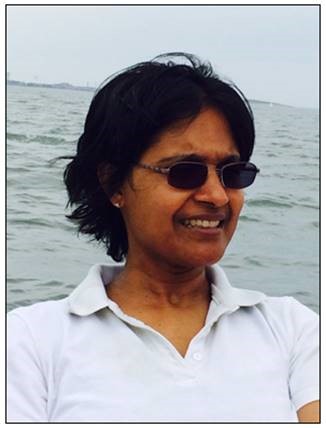SPWLA
Monthly Luncheon Meeting
Thursday
May16 2019
PanAm Building- Suite 1600
601 Poydras St,
New Orleans, LA 70130
11:30 – 1:00 pm
Register and pay online or pay cash/check at the door.
RSVP: Elizabeth Tanis ([email protected]) Cost - $25
An Unsupervised
Learning Algorithm To Compute Fluid Volumes From
NMR T1-T2 Logs In
Unconventional Reservoirs

Presented By: Lalitha
Venkataramanan
Scientific Advisor at
Schlumberger Doll Research
ABSTRACT
T1-T2
maps from wireline NMR logging tools show unique signatures for hydrocarbons
such as bitumen and producible and bound oil and gas. Similarly, capillary and
clay-bound water and water in larger pores have different signatures. However,
these signatures depend not only on the fluid and the pore geometry but also
the geometrical configuration of oil and water phases within the pore space.
These volumes are usually calculated by using predetermined cutoff values
obtained from analysis of laboratory data in the T1-T2 domain. However, these
cutoff values are lithology dependent and a function of the unknown fluid
properties. Thus, is desirable to have an automated algorithm that can compute
fluid volumes from T1-T2 maps. In this paper, we describe an unsupervised
learning algorithm to estimate the footprint of the different fluids in T1-T2
maps and subsequently compute their fluid volumes. Leveraging our knowledge of
the physics of the relaxation processes and measurements of laboratory
datasets, we propose a hierarchical clustering method consisting of the
following steps. First, we use the signal to noise ratio in the data to obtain
a rough estimate of the overall footprint of all the fluids. Second, assuming
each point in T1-T2 space corresponds at most to one fluid, a non-negative
matrix factorization technique is used to compute a footprint corresponding to
the different fluids. A hierarchical clustering method is used to ensure that
the footprint of each fluid is compact and connected in the T1-T2 domain.
Subsampling of the maps is used to study the stability and compute the most
likely number of fluids present. The final step consists of applying the mask
corresponding to the different fluids to the measured T1-T2 maps to determine
the fluid volumes. We demonstrate the application of this method on simulated
datasets.
BIO: Lalitha
Venkataramanan is a Scientific Advisor at Schlumberger Doll Research and
Program Manager for Automated Log Interpretation is based in Cambridge, MA. She
has worked in the field of measurement inversion and interpretation for over 20
years. Her research program focuses on inversion of multiple measurements to
estimate rock and fluid properties. Her research interests include forward
modeling and inversion of nuclear magnetic resonance, dielectric and optical
measurements obtained from downhole and laboratory data as well as
optimization, optimal experimental design and probability and stochastic
processes. Trained as an Electrical Engineer, she obtained her M.S and Ph.D.
degrees from Yale University in 1998. She has over 10 granted patents and 15
pending patent applications, over 25 refereed Journal papers. She has given
several invited presentations about her work at Universities and organized
panel discussions and workshops for careers outside academia. She is a board
member of SIAM industry committee.
New Orleans Chapter Open Positions: President Elect, Scholarship Committee Chair
Don't forget to renew your SPWLA Membership for 2019!